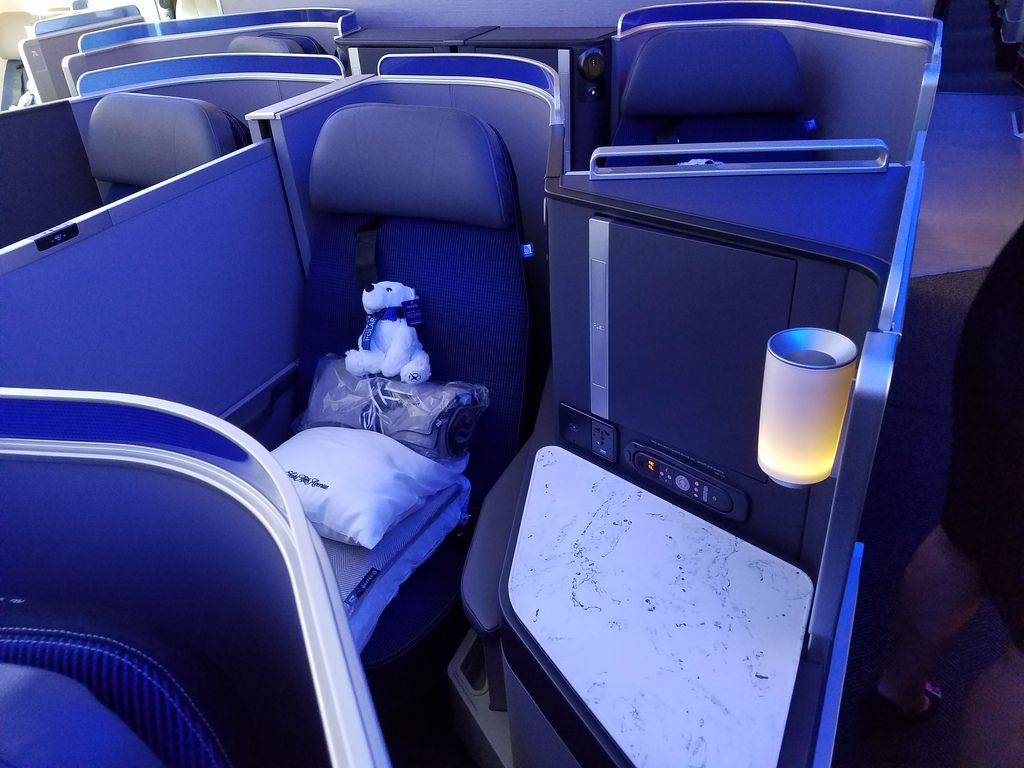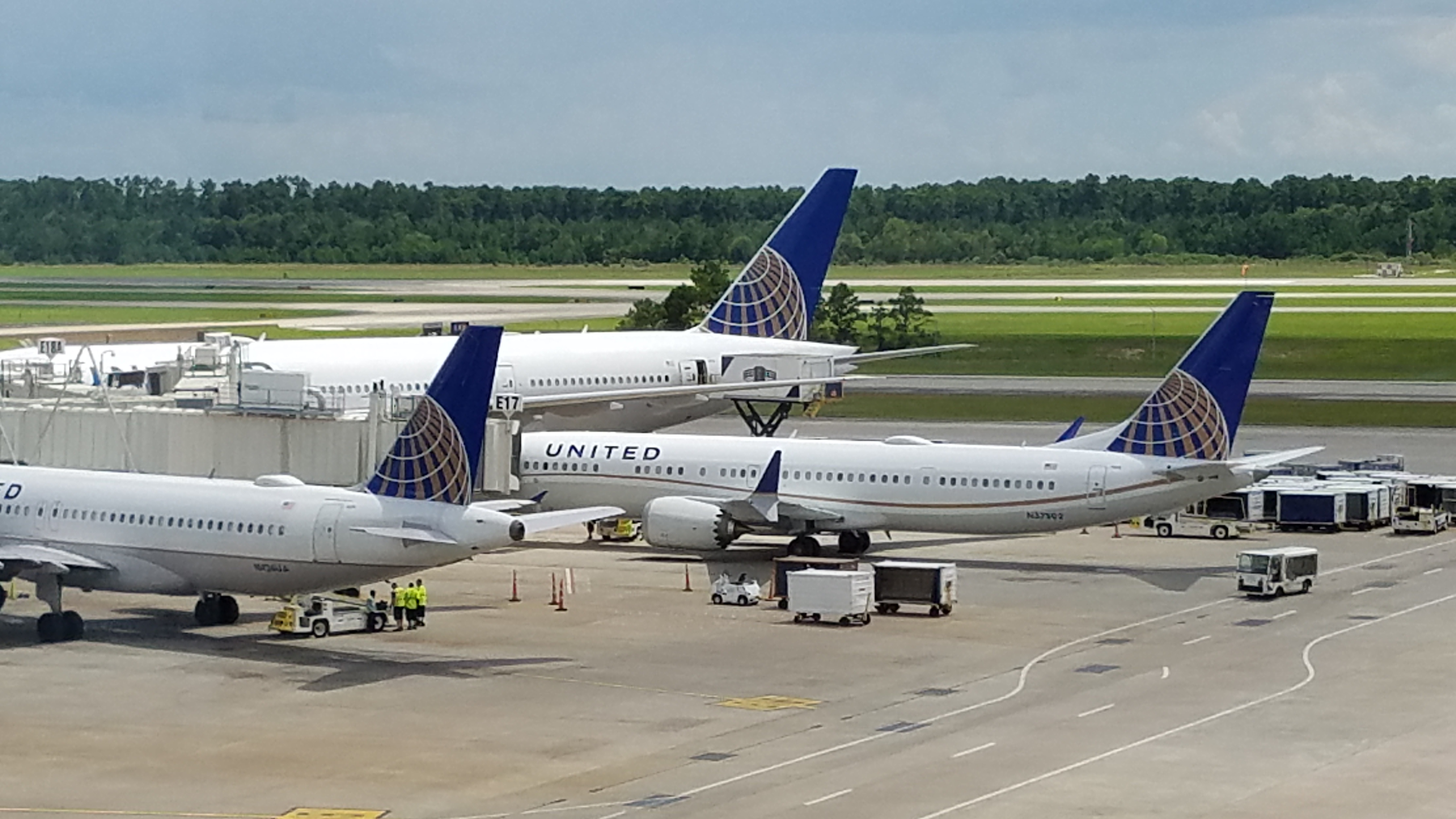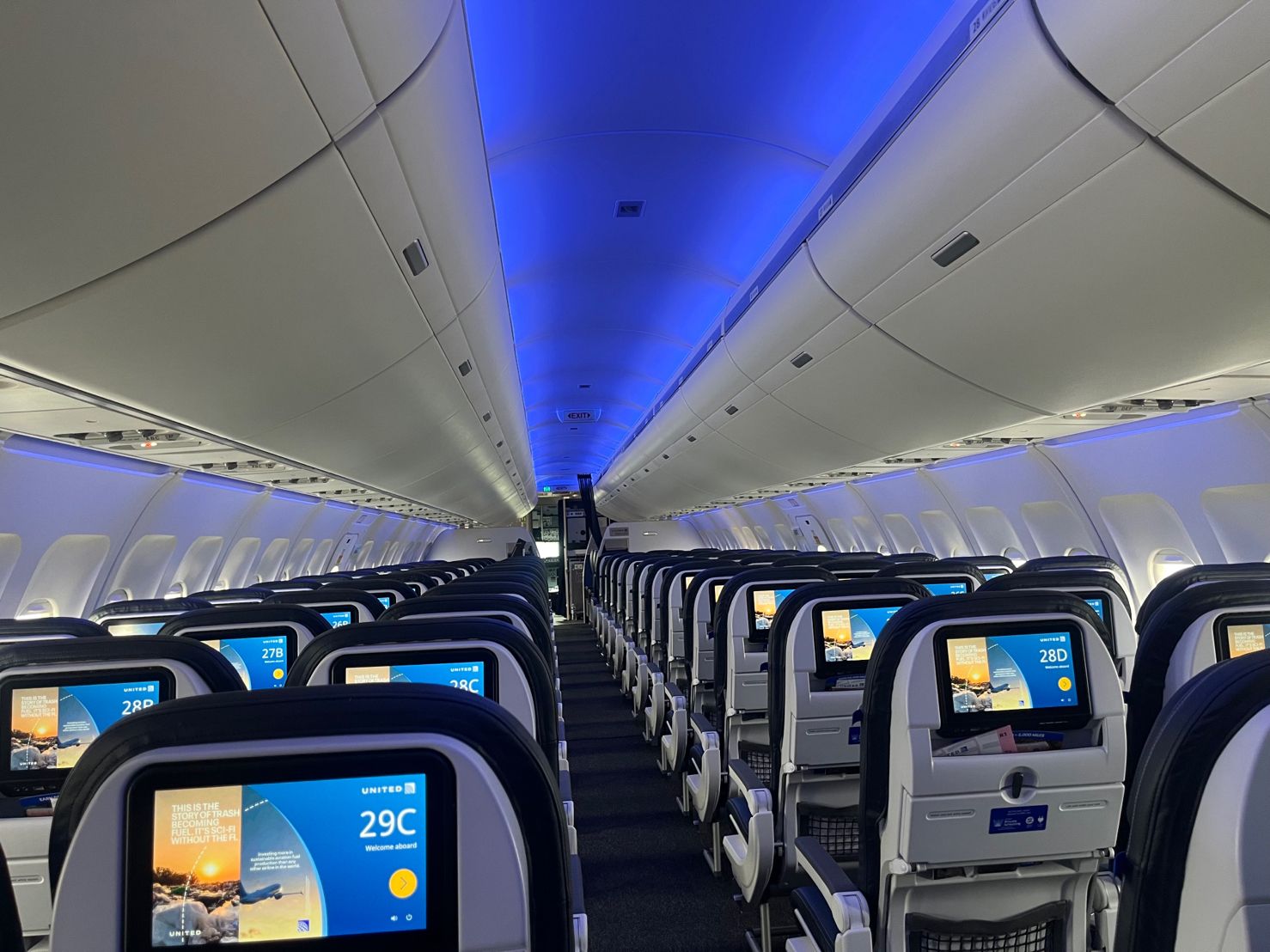United introduced its current status structure in 2019 and $18,000 spend plus 54 flights for status was exceptionally high then. Now it’s less so, since we’ve seen 20% inflation since then.
They’re increasing the requirements to earn status 20% – 25% for the 2025 program year (which means earning status next year, which runs through January 2027).
| Current | New | Increased Points | |||
| Silver | 12 flights and 4,000 points | 15 flights and 5,000 points | 25% | ||
| or 5,000 points | or 6,000 points | 20% | |||
| Gold | 24 flights and 8,000 points | 30 flights and 10,000 points | 25% | ||
| or 10,000 points | or 12,000 points | 20% | |||
| Platinum | 36 flights and 12,000 points | 45 flights and 15,000 points | 25% | ||
| or 15,000 points | or 18,000 points | 20% | |||
| 1K | 54 flights and 18,000 points | 60 flights and 22,000 points | 22% | ||
| or 24,000 points | or 28,000 points | 17% |

As they’ve done in recent years, existing elites will start of the year with qualifying points:
- Silver: 300
- Gold: 600
- Platinum: 900
- 1K: 1,400
In addition, while United remains the program stingiest in rewarding status for credit card spend (I guess that won’t change until Chase again pays more, and their current deal runs through 2029), they’re improving the earn rate on their pre-cobrand that comes with lounge access and dropping the $500 threshold at which qualfiying points are earned.
- Cards earn 1 status point per $20 spent
- Except the premium consumer and business cards earn 1 status point per $15 spent
Additionally, the cap on earning status goes from 6,000 to 9,000 points on the Quest card on 10,000 to 15,000 on the premium cards.

New Ways To Redeem PlusPoints, Since Your Upgrades Don’t Clear
Five years ago United replaced systemwide upgrades with PlusPoints. That allowed customers to make their upgrade certificates more divisible, so that they might be useful on shorter flights. And it let the airline introduce more than one level of point requirements for an upgrade, which hopefully meant more upgrade inventory and clearances.
- Platinum members receive 40 PlusPoints
- 1K members receive 280 PlusPoints
- Members receive an additional 20 PlusPoints for ever 3,000 qualifying points over 22,000 earned in a year.
Ultimately though just as it’s become near-impossible for many 1Ks to clear complimentary upgrades domestically, clearing upgrades using PlusPoints is harder than ever.
Currently unused PlusPoints simply expire. Next year United will allow members to convert them to qualifying points; convert them to travel credit; convert them to miles; or redeem them to gift elite status.

United Asks More From Flyers, Gives Less
This is really about increasing what you need to give United to maintain existing perks, which – since upgrades are fewer and farther between than ever – is less than it used to be. Fares aren’t up by 20% – 25%, either.
While there’s some logic to adjusting requirements, and managing the size of the elite pool for upgrades, they aren’t committing that those become easier after the change. In fact, the opposite is true, there’s a recognition that upgrades even when using confirmed instruments remain much harder than they used to be so they’re working to shift elite expectations away from upgrades and to other benefits like travel credit and miles (for awards that also cost more than they used to).
So what does this mean for the value of status? First, it’s harder to stretch for status than it used to be and the status you earn is worth less than it once was. That’s why, in many ways, mid-tier status remains the sweet spot.
If you’re going to earn status anyway then by all means go for it. And if you’re earning status, higher status is better than lower status! But each member is going to have to consider whether the treadmill – and by extension spend on a co-brand card – continues to make sense.


United Airlines wants to hike the requirements in order to increase revenue and to cut costs at the expense of those paying for the travel and/or the travelers. Elite status on the airline is not improving in the aggregate as a value-proposition for frequent flyers.
Chasing status really makes no sense anymore on UA. They are monetizing their Premium Cabins more, and the spend is very steep. Unless you are using OPM and getting Global Services can’t see much value here. Just pay for the cabin you want on whichever airline works best on that trip.
@ Gary — For rhe smart shopper, the actual increase is from $16,750 to $20,600 for 1K, or 23%. Pretty tame compared to Delta’s initial 75% increase and final 40% increase last year for DM. While people will whine and b$%^& about these changes, they are WAY better than Delta’s changes, plus United doesn’t fly 767-300s with trash business class everywhere, while bragging about their three A350-900s.
I think this will be the direction of FFP for the near term. More stringent earning requirements and either less benefits or benefits (upgrades at the top of the list) harder to access. It’s going to be more geared towards greater revenue potential from flyers and less about “loyalty.”
Granted status means less for United, Delta, and AA but its the worst on United
Even with status, if I am travelling with my wife , I often am left with splitting the PAX at check in to even be eligible for an upgrade ( which i never do ) . The other two at least consider you as a bundle. I live in a non hub airport and i do get upgraded at least 50% of time on AA and delta. Also i find the loyalty points game the most engaging of the 3 and i dont mind putting cc spend on AA cards because they are a hard currency to get
Weirdly, this change may cause me to do some old school mileage running in 2025.
I’m currently Gold and have re-qualified for Gold for 2025 (thanks in part to some PQP promos). I’m also currently 120k miles short of Million Miler and hence lifetime Gold. It’s probably cheaper for me to mileage run the last 120k miles next year than it would be to get to 10,000 PQP. And even if I don’t get all the way, it will have been nice to do as much of my last 120k to MM while Gold in 2025 instead of while Silver (or no status) in 2026.
It sucks for those OPM flyers whose employer is not willing to spend that much annually on their flights, and makes them fly Y. Status is the only thing they had going for them to make flying (especially US domestic) somewhat tolerable. What a miserable existence it will be now.
At least people who pay for their own tickets have a choice of better carriers, especially internationally.
Hello Gary, I am an interested reader from Germany and am always amazed at what frequent flyers in the USA put themselves through in order to achieve the highest possible status. Nobody in Europe would let that happen to them. Even at Lufthansa, where the hurdles are relatively high, it is easy to get Gold status (Senator) without investing a lot of money. Is it the first upgrades, the baggage allowance or the economy seats with more space? In Europe no airline would dare to do something like this…because the result would follow quickly!
@Anna
Now we get to the crux. The biggest whiners are the ones whose company pays the tariff. For those of us who got into the ff ride back at inception, the ride has been fantastic(from EA to CO to UA.
So many upgrades and bennies. Now I am retired and can afford to pay to ride in front, short haul or international. As a lifetime 1k, I still get Benny of great international clubs.
And I wish to express my gratitude to UA and CO for treating me so well over the years. I was loyal to them, and felt reciprocated.
As others have said the dynamics have changed. Your rewards will based upon the old way. Loyalty is given by big spending, perhaps more than your employers care to spend.
I am certain that the next step will be a vastly improved in flight service based based upon what you are willing to spend, as it used to be.
Thomas may have noticed that the US legacy major airlines in international alliances are far more profitable than the European airlines. But a lot of that has to do with there being more competition in Europe in a way, less spending power in Europe per capita than in the US, and the greater financial power of frequent flyer programs in the US.
The US seems to be the only place where airline “status” is so miserable that it doesn’t even include lounge access for local flights. Whereas with Gold status on any other *A airline (outside the US) the UA lounge will have to let you in.
Great point from harry hv. That dynamic is why I have lounge-access granting status from a few non-US airlines. Unfortunately, with SkyTeam when flying Delta domestically I am usually pretty much out of luck with lounge access unless I am flying internationally as even my AF/KL and SAS ElitePlus status are rejected by Delta for Delta domestic flights while Amex still works for lounge access. With Oneworld and Star Alliance, I just pull out my BA or A3 or some other non-North American frequent flyer card and get lounge access even for domestic US flights.
@ George — In other words, there is no reason to go for high status. More revenue to United and less benefits to the flyer. Why bother?
In my view,not worth it. It’s nothing more a cash cow for airline companies
Perhaps the devaluation of FF programs is the true intent all along. It forces pax to just pay up for F, thus monetizing the seat. Maybe the goal all along was to incentivize pax to go “Free Agent”, spend for business or first, and quit giving away upgrades or free seats. It worked for me! I no longer have loyalty: I just buy what I want based on price and schedule. Meanwhile I will ditch my airline cc’s and flip my spend to either Venture X or a cash back card.
@ Gary — I just realized that United required $18,000 and 54 segments for 1K in 2019, meaning the 2025 requirements of $20,600 and 60 segments represents an increase of just 14% over a 6-year period when inflation has been 25%. You can even spend your additional $2,600 on those 6 additional segments.
The per segment cost of 1K has increased just 3% from $333.33 to $343.33 over 6 years. Meanwhile, Delta’s Diamond Medallion requirement has increased 87% and possibly MORE!!
This will be then end of 1k for me. I’ve make it a couple of years now, barely, on the segments plus points. A couple more trips to hit the new segment threshold is untenable – I don’t have the time or energy to be away that much. For all the complaints on the internet about points plus, I have used all of mine, and primarily on international upgrades to Polaris or PP. Work travel is generally lowest economy fare with reasonable times, subject to federal restrictions including Fly America. Points plus upgraded 3 international trips this year, making them tolerable. I’m also about 50/50 on CPU upgrades, although obviously not hub-hub.
Now I have to figure out if Platinum is worth it, or just to go for gold and maybe low level on a second airline.
They say they are increasing the pqp spend-earn to 1 pqp per dollar, yet it was 25 pqp per $500, which is the same.
As a 1k, I am still going to have to dump a bunch of unusable plus points because they are not including the pp earned in 2024 for use for these other bennys.
@Gene – fwiw they announced those requirements in October 2019 but they did not go into effect because of the pandemic until this year
@ Gary — Ha! I actually wasn’t sure, but I knew someone would correct me if wrong. Either way, a 3% fare increase + 11% more flying in 5 years is a reasonable increase.
While some good points are made regarding inflation above, the real problem is that upgrades with pluspoints never, ever clear, especially if you’re flying out of a hub — I’m 1k and had exactly 3 out of 45 flights this year clear, and I put in pluspoints on every flight. But I fly out of SFO, Newark and Denver.
I’d be more willing to go for 1k again if pluspoints were guaranteed to clear (whatever happened to “skip the waitlist”?) even at triple or quadruple the “price.”